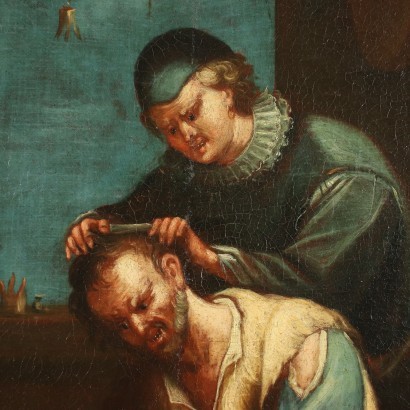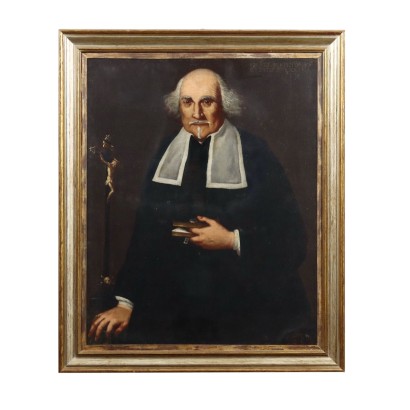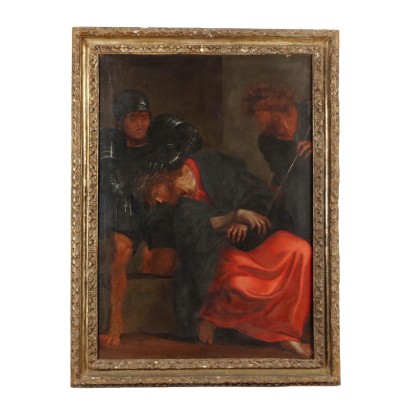ARARPI0107509
Genre Scene At The Barbershop Central European School 18th Century
Oil on canvas. Central European School.
The scene is set in the shop of a barber, who is intent on cutting a man's hair under the watchful eye of other customers and, above all, of some women with children, one of whom even observes the result of his work with glasses. Glasses were introduced in art first as a sign of distinction, and later also as a sign of scientific attention, progressively delineating the figure of the scholar, doctor and surgeon: in this painting, they actually underline the irony of the scene, and they are used as a tool for a close female examination of the spouse's haircut!
The whole scene is filled with figures, painted in a crude and almost grotesque way, with very marked, almost theatrical expressions and poses, underlined as well by the bright colours. Due to these characteristics, the painting fits well into that production of genre scenes based on popular life captured in its most lively and characteristic moments, which originated in the seventeenth century in Central Europe, especially in the Netherlands, to replace naturalistic and religious painting with lighter subjects, and which in Italy found a particular expression in the "Bamboccianti School", developed in Rome by Flemish and Italian painters. The painting has been restored and relined. It is presented in an antique frame.















